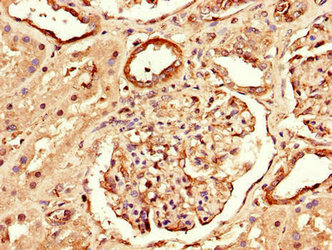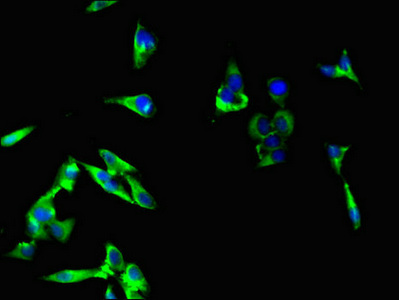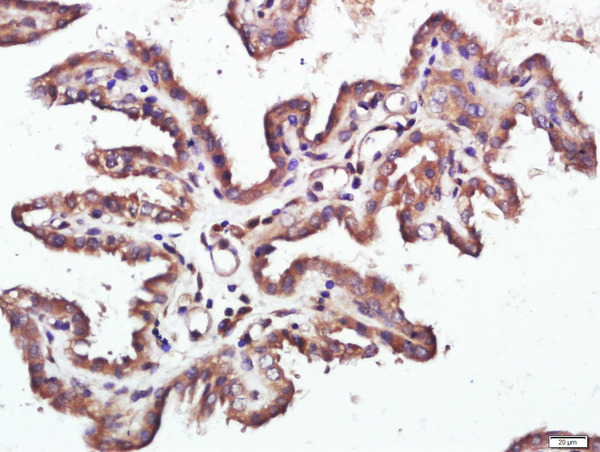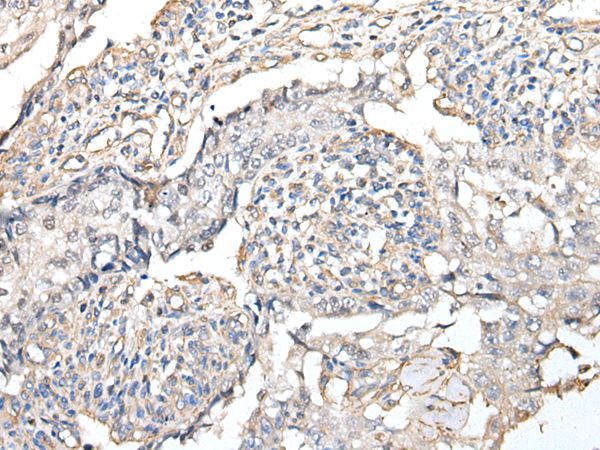
Immunohistochemistry of paraffin-embedded human skeletal muscle tissue using CSB-PA839774LA01HU at dilution of 1:100
RPTOR Antibody
CSB-PA839774LA01HU
ApplicationsImmunoFluorescence, ELISA, ImmunoHistoChemistry
Product group Antibodies
ReactivityHuman
TargetRPTOR
Overview
- SupplierCusabio
- Product NameRPTOR Antibody
- Delivery Days Customer20
- ApplicationsImmunoFluorescence, ELISA, ImmunoHistoChemistry
- CertificationResearch Use Only
- ClonalityPolyclonal
- ConjugateUnconjugated
- Gene ID57521
- Target nameRPTOR
- Target descriptionregulatory associated protein of MTOR complex 1
- Target synonymsKOG1, Mip1, regulatory-associated protein of mTOR, p150 target of rapamycin (TOR)-scaffold protein containing WD-repeats, raptor
- HostRabbit
- IsotypeIgG
- Protein IDQ8N122
- Protein NameRegulatory-associated protein of mTOR
- Scientific DescriptionInvolved in the control of the mammalian target of rapamycin complex 1 (mTORC1) activity which regulates cell growth and survival, and autophagy in response to nutrient and hormonal signals; functions as a scaffold for recruiting mTORC1 substrates. mTORC1 is activated in response to growth factors or amino acids. Growth factor-stimulated mTORC1 activation involves a AKT1-mediated phosphorylation of TSC1-TSC2, which leads to the activation of the RHEB GTPase that potently activates the protein kinase activity of mTORC1. Amino acid-signaling to mTORC1 requires its relocalization to the lysosomes mediated by the Ragulator complex and the Rag GTPases. Activated mTORC1 up-regulates protein synthesis by phosphorylating key regulators of mRNA translation and ribosome synthesis. mTORC1 phosphorylates EIF4EBP1 and releases it from inhibiting the elongation initiation factor 4E (eiF4E). mTORC1 phosphorylates and activates S6K1 at Thr-389, which then promotes protein synthesis by phosphorylating PDCD4 and targeting it for degradation. Involved in ciliogenesis.
- ReactivityHuman
- Storage Instruction-20°C or -80°C
- UNSPSC41116161








